Vous vous demandez comment modifier la direction du point de croix à l'aide de votre logiciel de broderie? Perfectionner cette technique peut transformer vos projets, leur conférant à la fois complexité et aspect raffiné. Que vous soyez novice ou couturière chevronnée, apprendre à naviguer dans cet aspect de votre logiciel peut sérieusement améliorer votre jeu d'artisanat. Ce guide promet une explication claire, répartition étape par étape des instructions de réglage, vous aidant à obtenir facilement des résultats époustouflants.

Prêt à plonger et à donner à votre broderie un avantage professionnel? Commençons!
Comment changer facilement les directions du point de croix dans un logiciel de broderie?
Quelle est la direction du point de croix
Il fait référence à la façon dont chaque point est orienté dans la broderie au point de croix.. Each stitch is made up of two diagonal threads that intersect to form an “;X.”; La direction des points influence l'aspect visuel, texture, et alignement avec le tissu de la broderie finie.
Types courants de directions de point de croix
- Point de croix complet: This standard approach completes both legs of the stitch to form a full “;X.”; It’;C'est la méthode la plus couramment utilisée dans les modèles de point de croix..
- Demi-point de croix (Point de croix à sens unique): Cette méthode consiste à terminer une seule jambe du point, ce qui donne une ligne diagonale. Il est généralement utilisé pour créer des ombres ou des textures plus claires..
- Quart de point de croix: Cette technique consiste à réaliser un quart de point de croix complet, généralement pour ajouter des détails fins ou des reflets dans un dessin.
- Point de croix vertical: Différent de l'approche traditionnelle, ce point comprend un point vertical et un point horizontal, qui peut être travaillé en diagonale ou en lignes droites sur le tissu, offrant une texture et une apparence uniques.
- Double point de croix: Également connu sous le nom de point Léviathan, cela implique deux points de croix complets posés à 45 degrés les uns par rapport aux autres, formant une forme en forme d'étoile. Il est principalement utilisé pour les éléments décoratifs.
- Mini point de croix: These smaller stitches cover just a quarter of the fabric’;le carré, parfait pour les éléments détaillés comme les yeux dans un design.
Types de logiciels utilisés pour changer la direction du point de croix
La sélection du bon logiciel pour ajuster les directions est cruciale pour obtenir la qualité et la facilité souhaitées dans votre projets de broderie. Vous trouverez ci-dessous trois options logicielles courantes, chacun avec un bref aperçu et une liste succincte des avantages et des inconvénients:
Studio de broderie Wilcom

Il s'agit d'un logiciel complet de conception de broderie largement reconnu dans l'industrie pour ses fonctionnalités étendues et sa précision dans numérisation de broderie et édition.
Avantages:
- Offre une large gamme d’outils avancés.
- Fournit une haute précision pour les ajustements de points.
- Largement adopté dans l'industrie de la broderie.
Désavantages:
- Un coût élevé peut dissuader les amateurs et les petites entreprises.
- Courbe d'apprentissage abrupte en raison de ses fonctionnalités complexes.
Embird
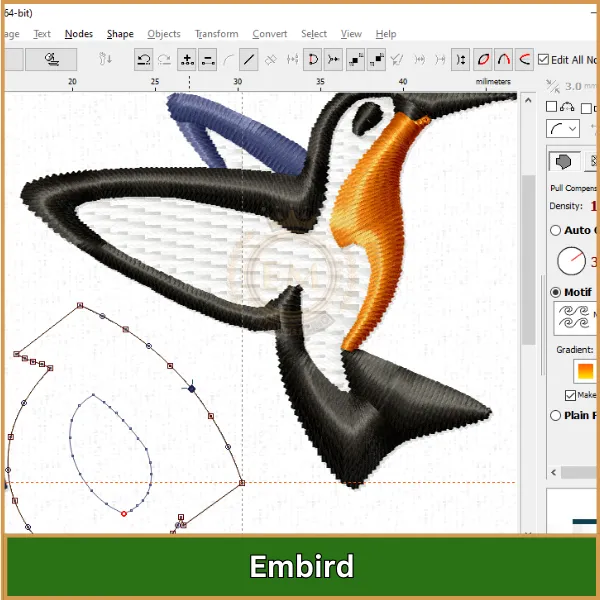
C'est polyvalent logiciel de broderie qui permet une compatibilité de format étendue et des fonctionnalités modulaires, qui s'adresse aussi bien aux amateurs qu'aux professionnels.
Avantages:
- Prend en charge de nombreux formats de broderie.
- Les achats modulaires maintiennent les coûts gérables.
- Forte assistance et disponibilité des tutoriels.
Désavantages:
- Interface utilisateur datée.
- Potentiel de bugs et de problèmes.
Point de croix professionnel platine
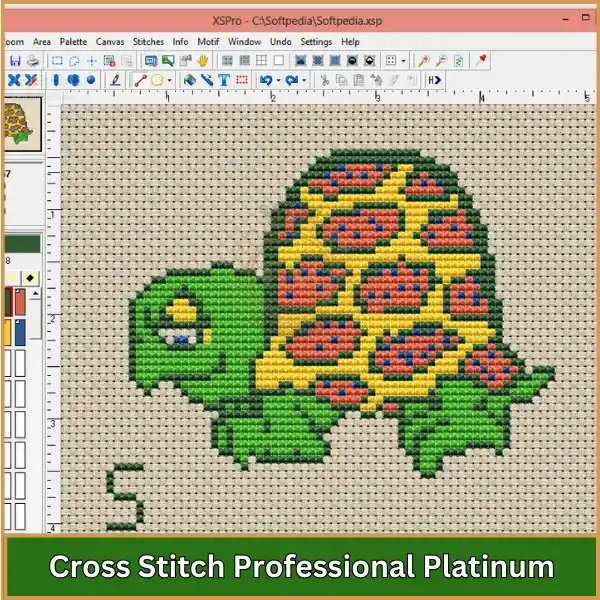
Spécialement conçu pour les projets de point de croix, Cross Stitch Professional Platinum se concentre sur la fourniture d'outils pour la création automatique de motifs et la simulation de points réalistes..
Avantages:
- Spécialisé dans les modèles de point de croix.
- Interface conviviale adaptée aux débutants.
- Des fonctionnalités telles que la simulation 3D améliorent l'aperçu de la conception.
Désavantages:
- Limité au point de croix, moins polyvalent pour d'autres types de broderie.
- Mises à jour logicielles peu fréquentes.
Ajustement des directions de point de croix dans Wilcom EmbroideryStudio
Here’;C'est un guide simple, étape par étape, pour changer la direction de vos points de croix. Studio de broderie Wilcom, améliorant à la fois l'apparence et la fonction de vos motifs de broderie.
Marcher 1: Lancez l'application
Commencez par ouvrir Wilcom EmbroideryStudio sur votre système.
- Ouvrez la conception: Head to the “;File”; menu, choose “;Ouvrir,”; et localisez le fichier de broderie vous souhaitez modifier. Ce fichier peut être au format .EMB ou .DST.
Marcher 2: Identifiez et sélectionnez l'objet de broderie
- Trouver l'objet: Dans votre espace de travail, repérez l'objet ou la section où vous souhaitez modifier les directions du point de croix compté.
- Activer l'objet: Cliquez sur l'objet pour l'activer, indiqué par l'apparence des poignées de sélection.
Marcher 3: Accéder aux paramètres de l'objet
- Ouvrir les paramètres de l'objet: Right-click the selected object to open the context menu and select “;Propriétés,”; ou double-cliquez sur l'objet pour ouvrir directement ses paramètres.
Marcher 4: Choisissez le type de point
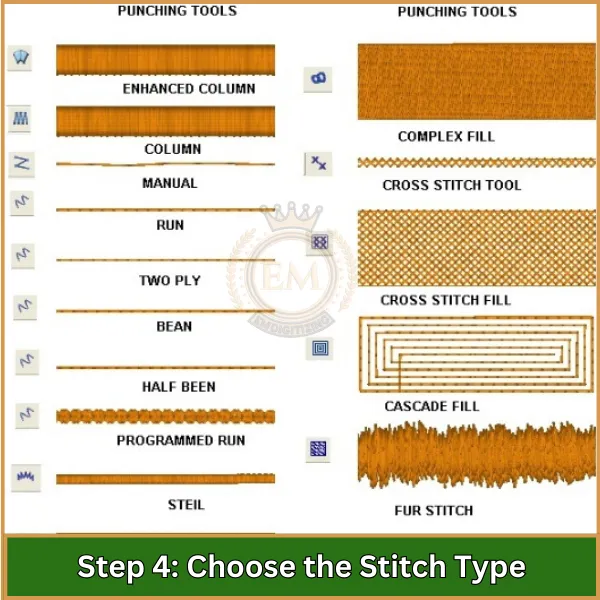
- Options de point: Dans la fenêtre des paramètres, navigate to “;Stitch Style.”; Ici, vous pouvez choisir parmi différents styles de points comme un point de croix complet ou un demi-point de croix.
Marcher 5: Définir la direction du fil
- Localiser le contrôle de direction du fil dentaire: Find the “;Floss Direction”; option dans la même fenêtre.
- Choisissez votre direction: Pour des points complets, sélectionnez la direction de superposition telle que la diagonale avant (/), diagonale arrière (\), horizontal (+), ou vertical (|) en fonction de l'effet visuel souhaité.
Marcher 6: Ajuster la direction du demi-point de croix
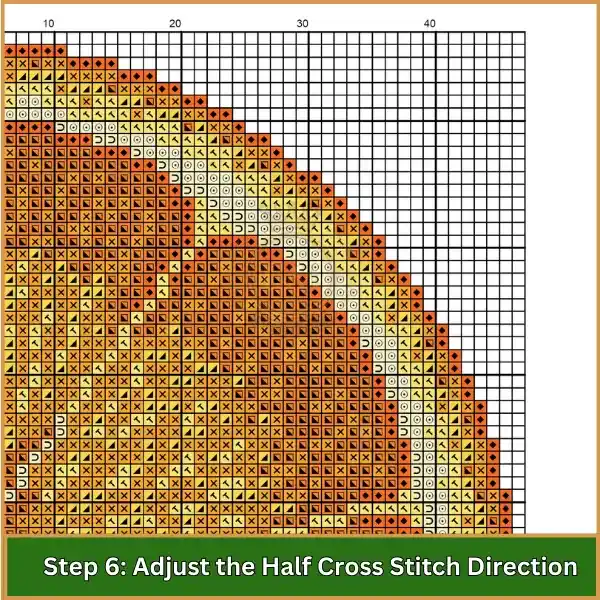
Si votre conception inclut le sens du demi-point de point de croix, affiner ces paramètres:
- Paramètres d'orientation: Dans la fenêtre des propriétés, ajustez l'orientation des points demi-croix pour l'aligner sur vos besoins de conception.
Marcher 7: Prévisualisez vos ajustements
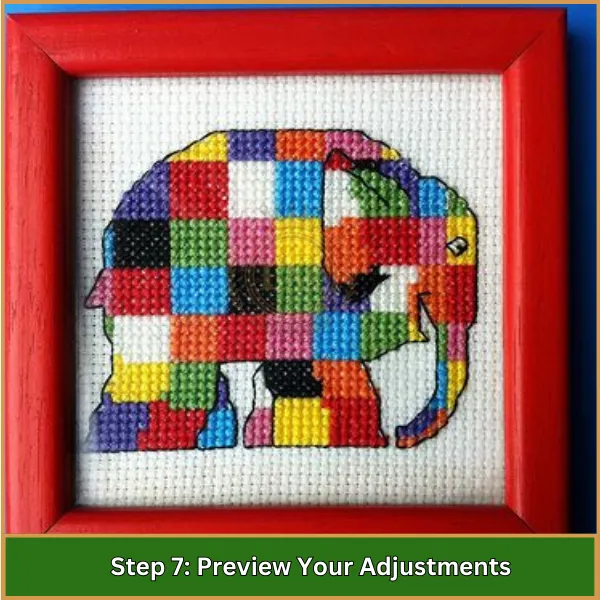
- Utiliser la fonction de prévisualisation: Activez la fonction d'aperçu dans Wilcom EmbroideryStudio pour voir l'impact de vos ajustements.
- Évaluer la conception: Cela vous permet d'évaluer et de peaufiner l'apparence avant de finaliser.
Marcher 8: Enregistrer la conception modifiée
- Sécurisez vos modifications: After you’;je suis satisfait des changements, save your work by clicking “;Save”; or “;Save As”; pour conserver une sauvegarde de la conception originale.
Marcher 9: Exporter ou imprimer la conception finale

- Exportation: If you’;j'envoie le motif à une machine à broder, go to “;Dossier,”; then “;Exporter,”; et choisissez un format approprié comme .DST ou .EXP.
- Impression: Pour une référence physique, print your design by selecting “;Print”; dans le menu Fichier, ce qui est utile pour le guidage manuel des coutures.
Conseils pour ajuster sans effort les directions du point de croix
- Maintenir une direction cohérente: Assurez-vous que le bras supérieur de votre point de croix va dans la même direction pour tous les points afin d'obtenir une finition soignée..
- Déroulez votre fil: Laissez pendre votre aiguille de temps en temps pour permettre au fil de se détordre, éviter les points inégaux.
- Utiliser des trous vides: Lorsque vous démarrez un nouveau point, visez à apparaître dans un trou vide plutôt que dans un trou avec un fil existant pour éviter de se fendre.
- Planifiez votre commande de couture: Organisez votre séquence de couture pour minimiser les écarts et assurer une transition en douceur entre les directions.
- Technique ferroviaire: Pensez à utiliser la technique du chemin de fer pour garder plusieurs brins de fil plats et alignés., améliorer l'apparence générale.
- Évitez de coudre vers le haut: Terminez tous les points vers le haut en une seule fois, puis travaillez vers le bas pour éviter d'utiliser le même trou pour des points consécutifs..
- Ne laissez aucun espace: Essayez de coudre continuellement sans laisser d'espace, car un remplissage ultérieur peut entraîner des irrégularités.
- Pratique et patience: Une pratique régulière vous aidera à devenir plus à l'aise pour changer de direction en douceur.
Conclusion
Si changer les directions du point de croix dans votre logiciel de broderie s'avère plus compliqué que prévu, ne t'inquiète pas, tu n'es pas seul. quelquefois, les ajustements peuvent sembler délicats, and that’;c'est où EMnumérisation entre. Que vous ayez besoin d'aide pour changer la direction des points ou même pour renumériser l'intégralité de votre motif, nous avons ce qu'il vous faut.
Chez EMdigitizing, nous offrons de la haute qualité services de numérisation à des prix imbattables, bien inférieur aux taux du marché, sans compromis sur la qualité. Plus, nous sommes fiers de fournir des délais d'exécution ultra-rapides pour que vos conceptions soient prêtes en un rien de temps. Et si vous êtes un premier client, vous avez de la chance, nous vous proposons un fantastique 50% réduction juste pour vous!
Pourquoi avoir du mal quand l'aide d'experts est à portée de clic? Contactez-nous dès aujourd'hui et laissez-nous prendre votre motifs de broderie au niveau suivant!
FAQ
Les demi-points de croix doivent généralement aller du bas à gauche vers le haut à droite, maintenir la cohérence dans votre travail pour une apparence uniforme.
Au point de croix, la direction des points peut changer en fonction du motif ou du design pour obtenir différentes textures ou effets d'ombrage.
Pour vous assurer que vos points de croix sont tous orientés dans la même direction, cousez systématiquement la première jambe de chaque croix du bas à gauche vers le haut à droite, puis traversez-le du bas à droite vers le haut à gauche.
Pour le point de croix standard, le point du bas doit aller du bas à gauche vers le haut à droite, et le point supérieur doit traverser du bas à droite vers le haut à gauche pour une finition soignée.
